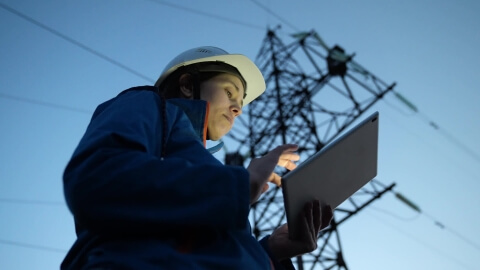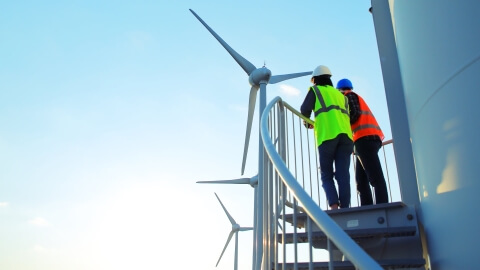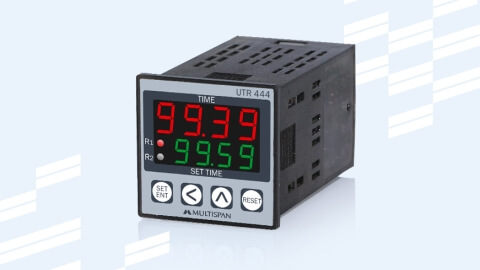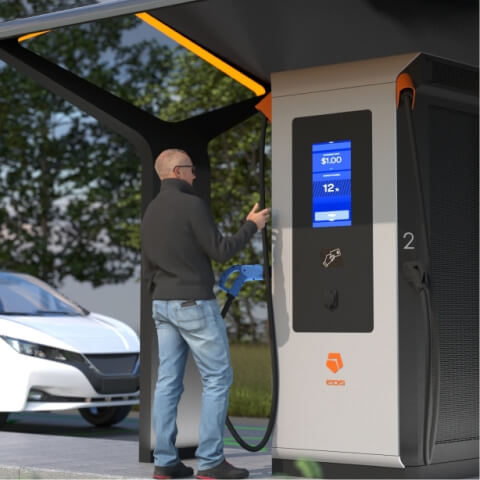The Internet of Things (IoT) has emerged as a game-changer in energy management, offering numerous opportunities to optimize resources, reduce costs, and boost sustainability. In enterprise settings, IoT enables real-time monitoring, predictive maintenance, and optimization of complex energy systems across factories, grids, and data centers. In households, connected devices like smart thermostats, meters, and EV chargers empower individuals to track consumption and reduce costs.
The wide applicability of IoT makes it essential not only for business growth and consumer convenience but also for addressing global energy challenges. With electricity demand projected to rise by 3.4% through 2026 and the share of renewables expected to grow by 16% by 2030, IoT provides the intelligence needed to balance expanding demand with the integration of clean energy. At the same time, the EU Energy Efficiency Directive mandates an 11.7% cut in final energy use by 2030, reinforcing the need for data-driven IoT systems that optimize consumption, support decarbonization, and ensure regulatory compliance.
Let’s discover how IoT is transforming energy management by offering numerous opportunities to optimize resources, reduce costs, and boost sustainability.
IoT as a driver of new products and opportunities
How do IoT solutions create a competitive advantage in energy and utilities?
IoT solutions in energy and utilities enable remote monitoring, predicting, and responding to energy demand. They provide real-time insights into energy usage, detect equipment anomalies before they fail, understand peak usage patterns from connected devices, and respond accordingly.
For instance, 74% of oil and gas companies and 80% of utilities have already deployed IoT initiatives, with many reporting measurable gains in efficiency and safety. Meanwhile, the European Commission projects that by 2030, investments in smart meter deployment will reach €47 billion, with expected savings of €270 per electricity meter. Thus, more and more businesses and households will apply IoT in energy management to stay in the market and reduce costs.
What are the most promising IoT-driven product opportunities in energy management for the next 5 years?

IoT is set to reshape energy management in the years ahead. Key opportunities will emerge in areas such as renewable energy integration programs, centralized energy management, AI-powered predictive maintenance, automation, resource optimization, and minimizing energy waste.
Let’s see the IoT-driven product opportunities in more detail:
- IoT-based energy management systems. Modern IoT sensors are accurate, reliable, and affordable, enabling energy companies to gather detailed real-time data from various sources such as power grids, wind turbines, solar panels, heat generation equipment, and EV chargers. This data helps optimize energy production, distribution, and consumption, leading to more efficient operations.
- AI-driven predictive maintenance. Predictive maintenance, powered by IoT sensors, can identify potential issues before they lead to costly failures, thereby reducing maintenance costs and downtime. As energy companies strive to remain competitive and enhance profitability, the cost-saving potential of IoT will drive its adoption in the energy sector over the coming years. In addition to traditional asset monitoring, edge AI algorithms can optimize battery energy storage systems (BESS) by providing insights on how to improve battery performance and lifespan.
- Automation, resource optimization, and minimizing energy waste. IoT enables automation across energy systems by connecting sensors, controllers, and analytics to make real-time decisions without manual intervention. As a result, IoT helps minimize energy wastage, ensuring every kilowatt is used efficiently while reducing costs and emissions across industrial, commercial, and residential environments.
- Smart EV charging & e-mobility. IoT-connected residential and commercial EV chargers that optimize charging schedules, balance loads, integrate with rooftop solar, and (in advanced setups) enable bi-directional energy flows. It also includes OCPP protocol integration to communicate with back-end/cloud systems (CPMS).
This trend of increased usability of IoT in energy management is largely driven by governmental energy integration programs. Among them are the abovementioned EU Energy Efficiency Directive and the EU Renewable Energy Directive, which raise the 2030 renewables target to at least 42.5%. Another key initiative is the Electricity Market Design reform, which aims to encourage the clean energy transition and strengthen energy security.
Which new business models are enabled by IoT in energy management?
The game-changing potential of IoT in energy management has enabled new business models and B2B opportunities. These include energy arbitrage and trading, Energy Savings-as-a-Service (ESaaS), Predictive Maintenance-as-a-Service, Virtual Power Plants (VPPs), smart grid management, and outcome-based/pay-per-use services.
Primarily by selling and installing assets such as solar panels, wind turbines, or battery systems, the popularity of IoT sensors has led companies to adopt data-centric, service-based models that optimize energy generation, storage, and distribution in real-time.
Business models enabled by IoT in energy management | |
|---|---|
| Predictive Maintenance-as-a-Service (PdMaaS) | Instead of selling equipment alone, companies offer IoT-enabled maintenance services. Sensors continuously monitor asset health (e.g., voltage, vibration, temperature), then predict failures and schedule proactive repairs, reducing downtime and optimizing energy use. |
| Energy Arbitrage | IoT devices, combined with AI and analytics, help monitor grid prices, control energy storage assets, and automatically buy or sell electricity at optimal times, thereby maximizing profit and balancing demand. |
| Energy Savings-as-a-Service (ESaaS) | Companies install smart, energy-efficient systems (e.g., lighting, HVAC, controllers) for households and are paid a share of the verified savings. Clients benefit from lower energy costs without an upfront investment. |
| Virtual Power Plants (VPPs) | VPPs aggregate distributed energy resources (solar panels, batteries, EVs) into a single, controllable network. IoT connectivity in such a network allows coordination and participation in wholesale markets or grid services. |
| Smart Grid Management | Utilities use IoT sensors and analytics to optimize grid operations, predict load, and manage distributed assets. This creates new services around grid stability, demand response, and flexibility markets. |
Examples of successful IoT-based energy products
There are many examples of successful IoT-based energy products, including IoT-based telemetry solutions for commercial energy storage, IoT solutions for household energy management, smart EV chargers, connected thermostats, and smart meters.
IoT telemetry solution for energy storage
Voltfang, a German company delivering renewable energy storage solutions in cooperation with Lemberg Solutions, developed an IoT telemetry solution for energy storage that collects real-time data from BMSs within the energy storage system and transfers it to the cloud environment. The solution helped create more efficient and safe energy storage systems for their customers.

IoT-based system for household energy management
In cooperation with Lemberg Solutions, Powerfox developed an open IoT energy platform service for household energy management, enabling consumers, businesses, and public facilities to monitor and optimize their energy use in real-time. The native iOS and Android apps make it easy to track energy generation, consumption, and compare results with other users, thereby fostering smarter energy habits.
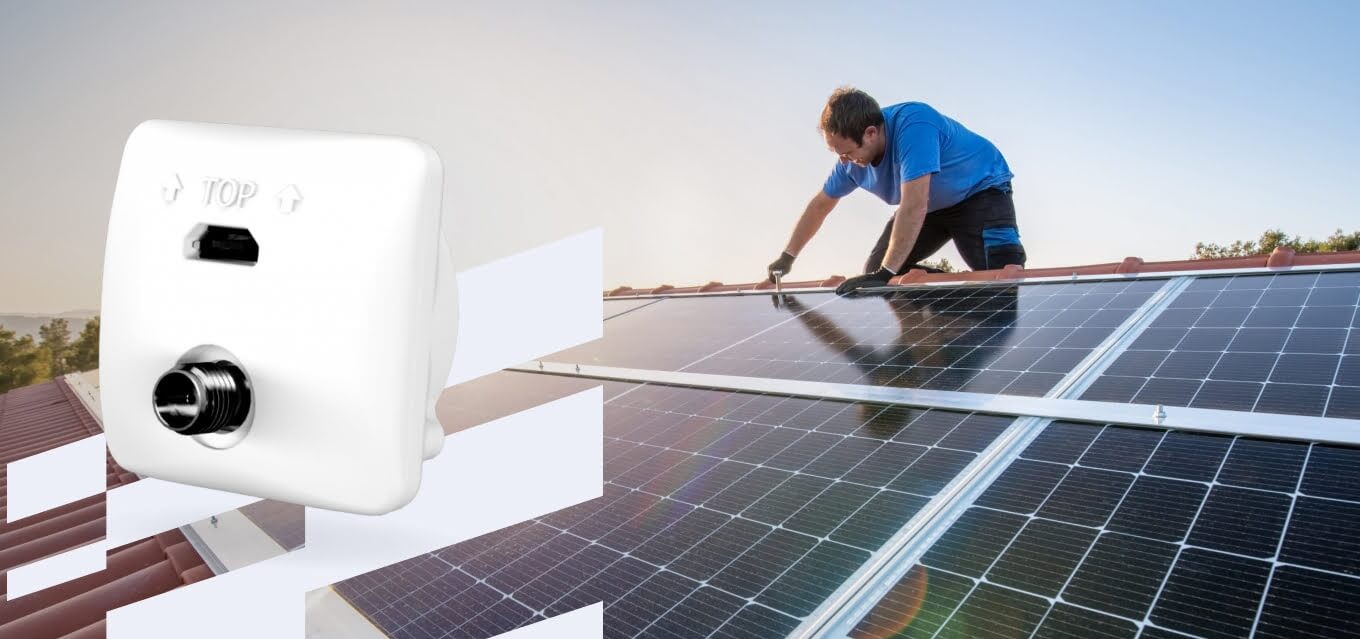
Smart EV chargers that allow real-time monitoring, remote control, and software updates
EV chargers are a clear example of successful IoT-based energy products, combining connectivity, real-time data, and intelligent control. For example, the EDS EV charging station, developed in cooperation with the LS team, enables seamless interaction between the charger, vehicle, and user interface. It delivers real-time charging data and smooth communication between hardware components, enhancing user experience and system reliability.
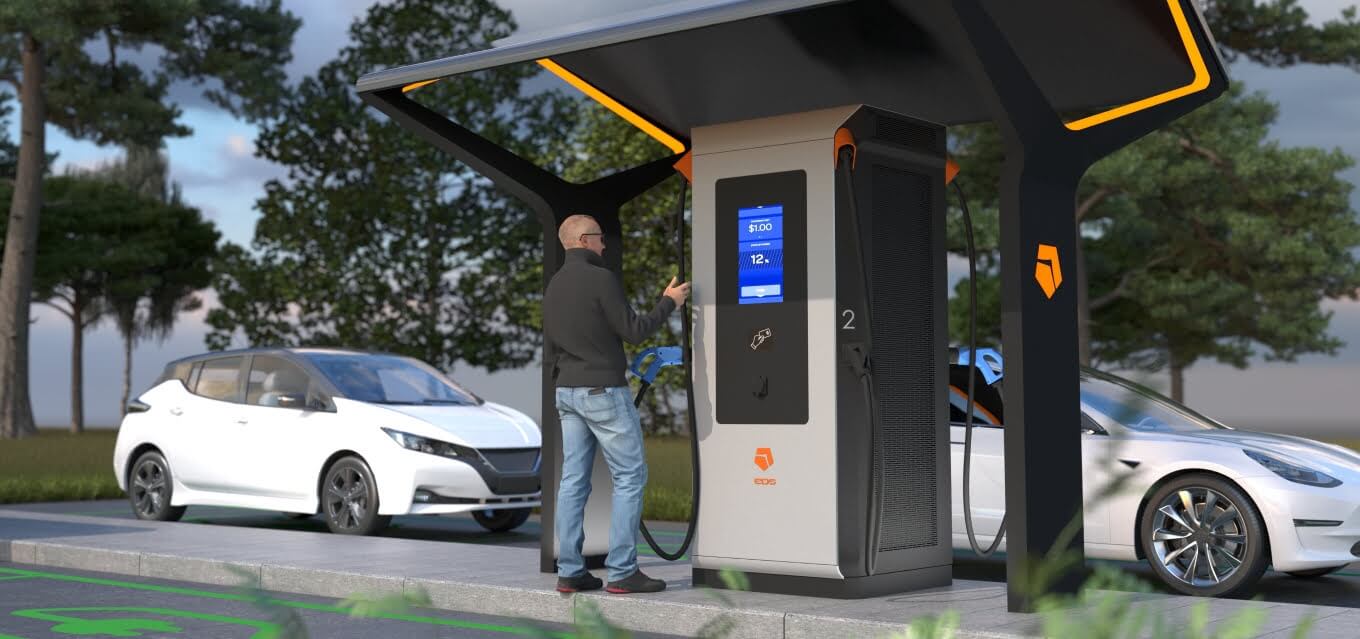
Metrics and KPIs for IoT-based Energy Solutions
For IoT-based energy products, tracking the right KPIs helps teams prove value, guide product iteration, and align with customer and regulatory expectations. The most important metrics fall into five categories: operational efficiency, predictive maintenance, sustainability and compliance, user value, and cybersecurity.
Metrics to track the effectiveness of IoT-based energy solutions | ||
|---|---|---|
| KPI | Definition | Example |
| Energy savings | Measures the reduction in total or site-level energy consumption after IoT deployment. | Achieving 15% less energy use via automated HVAC and lighting control. |
| Peak-load reduction | Indicates how effectively IoT systems quantify demand-response or flexibility gains. | E.g., an automated off-peak charging can reduce EV charging peaks by up to 70%. |
| System uptime | The percentage of time connected assets operate without downtime. | Modern AI-powered analytics can detect equipment faults with >90% accuracy, allowing proactive intervention. |
| Mean time between failures | Average operational time between equipment breakdowns, showing reliability improvements. | Modern AI-powered analytics can reduce downtime by 20-30%. |
| CO₂ reduction | Quantifies annual carbon emissions avoided via efficiency or renewables optimization. | Google’s carbon-intelligent data centers reduce carbon emissions by approximately 12% annually. |
| Security & compliance | Percentage of IoT devices with up-to-date firmware and secure OTA patches. | EU Cyber Resilience Act mandates verifiable OTA update policies for all connected devices. |
How does IoT adoption in energy contribute to sustainability and net-zero goals?
IoT accelerates sustainability and net-zero by converting real-time data from smart meters, EV chargers, inverters, and thermostats into actionable insights. With these insights, decision-makers can shift demand to cleaner hours, smooth out peaks in energy consumption, integrate variable renewables, and reduce waste.
Utilities and large sites use this telemetry for forecasting, automated set-point control, and verification of savings. For example, smart EV charging coordinated by IoT platforms reduces the peak load on the grid by ~6%, with bidirectional charging adding a further reduction of around 9% compared to unmanaged charging. This not only helps meet sustainability goals but also reduces system costs and facilitates greater uptake of renewable energy.

IoT architecture and technology for energy management
What is the best IoT architecture for large-scale energy management systems?
The best IoT architecture for energy management is a multi-layered system that integrates devices, networks, and software to control and optimize energy consumption and distribution.
It includes sensors for data collection, IoT data loggers that store the data, IoT gateways for secure data transmission across the network, and an application layer that presents the data for decision-making.
- Sensors. In practice, all IoT-powered energy management processes start with sensors that monitor data from solar inverters, HVAC systems, or other equipment. These sensors track key parameters such as power consumption, voltage, and temperature, and convert physical conditions into digital data.
- IoT gateways. IoT gateways serve as a bridge between field devices and higher-level platforms. Data from sensors, meters, and controllers passes through the gateway, where it is filtered, aggregated, and converted into standard communication protocols. Gateways often handle basic edge processing and encryption, ensuring that only relevant, verified data moves to the cloud or central management system.
- Network. Through a secure network (wired, Wi-Fi, or cellular), this information is transmitted to the data processing layer, where software stores, filters, and analyzes it in real-time.
- Applications. Ultimately, everything comes together in the application layer, which encompasses user dashboards and mobile apps where operators or consumers can view live energy data, track trends, receive alerts, and make informed decisions to conserve energy and lower costs. Here, the system can detect faults, forecast energy demand, or suggest efficiency improvements.
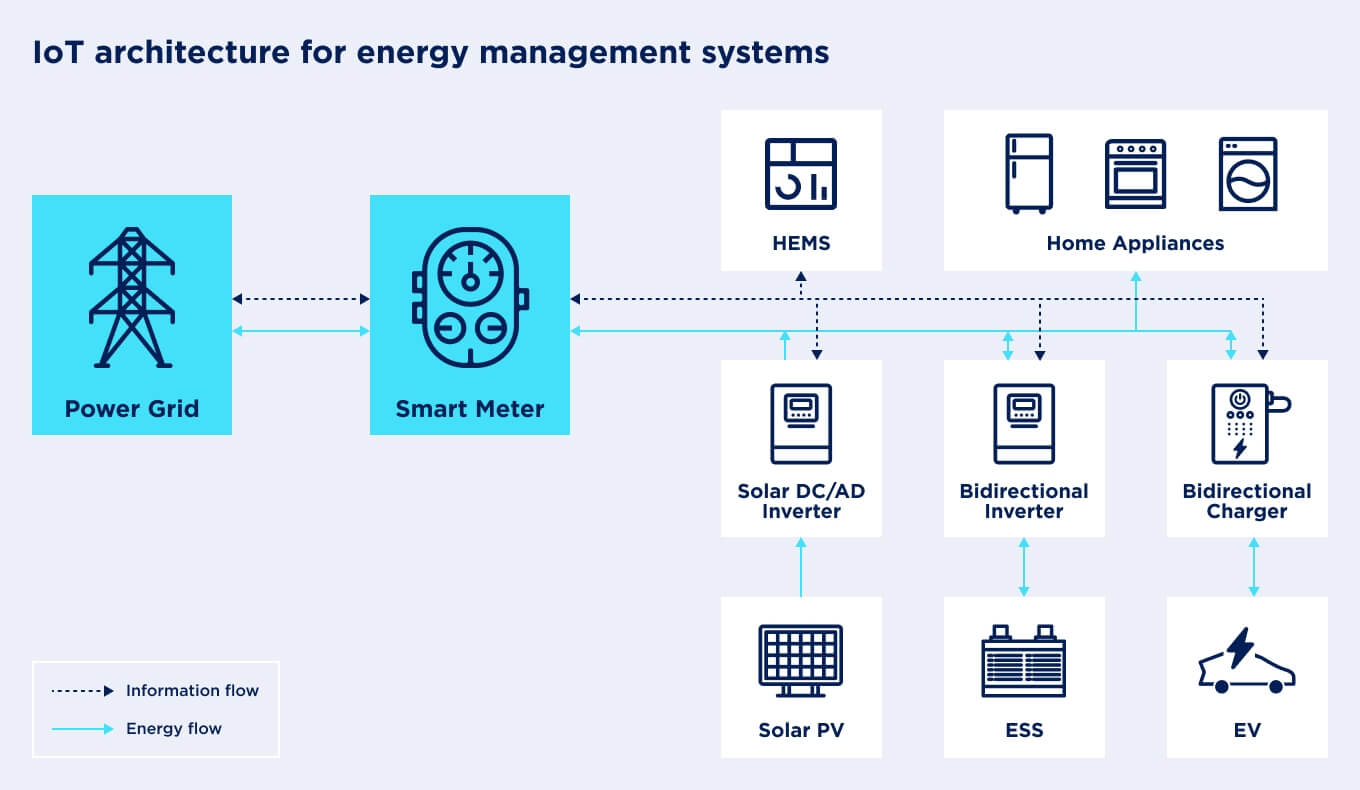
Which IoT communication protocols are most reliable for smart grids and energy monitoring?
Depending on the system’s needs, IoT communication in smart grids and energy monitoring can be either wired (for reliability and speed) or wireless (for flexibility and remote access). Each technology has its own strengths and use cases.
Wired Communication Protocols
- Ethernet. Provides high-speed, stable, and secure data transfer. Ideal for industrial plants and energy management servers where constant connectivity and low latency are critical.
- RS485. A long-established standard for connecting devices like smart meters, solar inverters, or power analyzers. It supports multiple devices on a single line and is resistant to noise, which makes it highly effective in harsh industrial environments.
- CAN. Common in EV chargers, battery systems, and vehicles, it ensures fast, reliable communication between components.
Wireless Communication Protocols
- Wi-Fi. Easy to set up and suitable for small facilities where sensors and gateways are located close together. Best for local data collection and monitoring dashboards.
- LoRa / LoRaWAN. Designed for long-range, low-power communication. It is widely used to send small packets of data (such as temperature or voltage readings) from meters or remote renewable energy sites over several kilometers.
- LTE / 4G / 5G/NB-IoT. Offers secure, wide-area connectivity with reliable speed. So, it is widely used for mobile or remote assets such as EV charging stations, solar farms, or field sensors where wired connections aren’t possible.
In addition to network connectivity, developers often use application-level protocols such as Modbus, MQTT, and HTTPS. These protocols define how devices exchange and interpret data when connected, ensuring smooth communication among sensors, gateways, and energy platforms.
How to ensure scalability and interoperability in IoT-based energy solutions?
Scalability and interoperability in IoT-based energy systems depend on the following steps:
- Use open communication standards. Adopt widely supported protocols such as MQTT, Modbus, M-bus, wM-bus, LoRaWAN. These standards enable energy systems to communicate smoothly regardless of manufacturer or hardware type.
- Design a modular and scalable architecture. Build systems with a modular design, where new devices, analytics tools, or services can be added independently. Such an architecture makes it easier to scale and adapt to new business or technology requirements without disrupting existing operations.
- Ensure integration through standardized APIs. Develop and document standard APIs to connect your IoT system with third-party tools, infrastructure, or enterprise platforms. APIs act as a universal language that simplifies data exchange and allows easy integration with evolving technologies.
- Maintain compliance and certification. Follow international interoperability frameworks and standards such as ISO 50001 (Energy Management Systems) and IEC 61850 to ensure compatibility across vendors and systems. Device certification and adherence to cybersecurity standards further enhance trust and long-term reliability.
- Support continuous updates and lifecycle management. Establish a process for over-the-air (OTA) updates and firmware management. Regular updates keep devices secure, ensure compatibility with evolving standards, and maintain consistent performance as the system expands.
Combining IoT and AI for smarter energy optimization
How can IoT and AI be combined to optimize energy usage and forecasting?
The combination of IoT and AI in energy management creates intelligent and autonomous systems. The former connects various devices and sensors to collect and exchange data in real time; the latter analyzes this data to extract valuable insights, identify trends, and make autonomous decisions. Together, AI and IoT systems optimize processes, improve decision-making, and personalize user experiences. For example, in a factory, IoT sensors can monitor high-frequency data on weather, while AI utilizes this data in combination with price/performance forecasts to predict energy consumption.

How does IoT enable demand response and real-time energy optimization?
IoT and AI technologies are increasingly integrated into a wide range of energy assets, including transformers, smart meters, and energy-storage units, enabling continuous data transmission and intelligent control. Embedded sensors constantly collect information on voltage, temperature, load, and performance parameters, while AI algorithms analyze these data streams in real time to detect anomalies, predict failures, and optimize operations.
This integration transforms previously passive infrastructure into active, self-aware systems capable of balancing demand and supply, maximizing equipment lifespan, and improving grid stability. By ensuring seamless connectivity across assets, utilities, and energy managers gain actionable insights that drive efficiency, lower costs, and support the transition toward cleaner, smarter energy networks.
Challenges and risks of IoT in energy management
What are the main challenges of IoT for energy management?

Connected devices, smart sensors, and real-time data are helping utilities and businesses improve efficiency and support sustainability goals. However, implementing IoT for energy management is a complex task that requires specialized skills and expertise. Some of the common challenges may include:
Cybersecurity and data privacy risks. Energy infrastructure is part of critical national systems, making IoT devices and networks prime targets for attacks. Unsecured endpoints, weak encryption, or outdated firmware can expose grids to breaches and service disruptions. Ensuring compliance with NIS2 and EU Cyber Resilience Act adds complexity and cost.
Interoperability issues. Utilities often operate legacy systems alongside new IoT platforms using different communication standards (M-bus, Modbus, BACnet, CANbus, RS-485, LoRaWAN, LTE/5G/NB-IoT, MQTT). Integrating these into a single, interoperable ecosystem requires expertise, time, and resources — something many companies may lack.
Architecture challenges. The main architectural challenges in industrial EMS stem from the need to balance performance, security, and scalability across cloud and edge environments. Industrial EMS handles massive real-time data streams from meters, sensors, and industrial assets, but sending everything to the cloud can create latency and privacy risks. Critical operations (like load control or fault response) often need to stay on the edge for immediate decisions, while large-scale analytics and forecasting work best in the cloud. Companies must decide which data stays local and which can safely move to the cloud, without losing visibility or control across distributed sites.
Regulatory complexity. Different jurisdictions have varying rules for data protection, interoperability, and cybersecurity (GDPR, NIS2, CRA, and energy market codes). Navigating these frameworks requires continuous compliance monitoring and documentation.
How to design IoT-based products that meet regulatory requirements in the energy sector?
Designing IoT solutions for energy management involves balancing innovation and stringent regulatory requirements. Regardless of the market, energy systems are part of critical infrastructure; therefore, devices and platforms must meet defined technical, safety, and security standards from the outset.
To succeed, businesses that want to develop their IoT-based energy management product should follow these key principles:
Design for compliance from the start. Map system requirements to relevant frameworks such as NIS2 (EU Directive on Network and Information Security), IEC 62351 (secure power-system communications), and ISO 27001 for information security management. Integrating these controls early avoids costly redesigns during certification.
Implement a secure-by-design architecture. Apply strong device identity, encryption (TLS 1.3, secure key storage), secure boot, and digitally signed OTA updates. Limit user privileges, isolate communication layers, and establish continuous vulnerability monitoring.
Validate all inputs and conduct secure coding and testing. Use best coding practices, code reviews, vulnerability scanning, and penetration testing to identify and fix weaknesses before deployment. Securely handle data from users, apps, and services to prevent injection attacks.
Provide long-term support. Guarantee a plan for security updates and vulnerability management throughout the device's entire lifecycle, including its end-of-life. Implement systems for ongoing monitoring, intrusion detection, and a defined incident response plan.
Work with trusted development partners. Engage experienced partners for the product development to ensure the product meets all required compliance and security specifications.

How to address security risks in IoT-enabled energy platforms?
Securing IoT-enabled energy platforms starts with understanding that every connected asset, such as smart meters, sensors, or controllers, can become a potential attack point. Europe’s 2024 incident reporting reveals that energy is one of the most affected NIS sectors, underscoring that exposure is systemic, not isolated. To keep IoT-enabled energy platforms safe and reliable, follow these key practices:
- Build a zero-trust framework that requires every device and user to prove their identity before access, not just once.
- Encrypt all data on the device, during transmission, and in storage, so attackers can’t intercept or tamper with it.
- Use secure deployment and updates, apply signed firmware patches, enable auto-updates for devices, and verify that they are up to date.
- Segment operations and monitoring by separating IoT networks from business/IT networks to stop a possible breach from spreading.
- Maintain full visibility of your devices, monitor behavior, and alert on anomalies.
By combining these layers of protection, you make your energy platform not just connected, but resilient.
Conclusion
IoT is already transforming the energy industry, making grids smarter, operations more efficient, and sustainability goals easier to reach. However, its true potential is still ahead. As the shift toward renewables, electrification, and automation accelerates, businesses that combine IoT technology with clear goals will be the ones shaping the future of energy.
Now is the right time to invest in IoT-driven energy solutions that reduce waste, optimize resources, and unlock new value streams. Whether you need help designing an IoT architecture, developing connected products, or scaling an existing platform, our team can support you at every stage, from concept to deployment, helping you turn data into real impact and long-term advantage.



